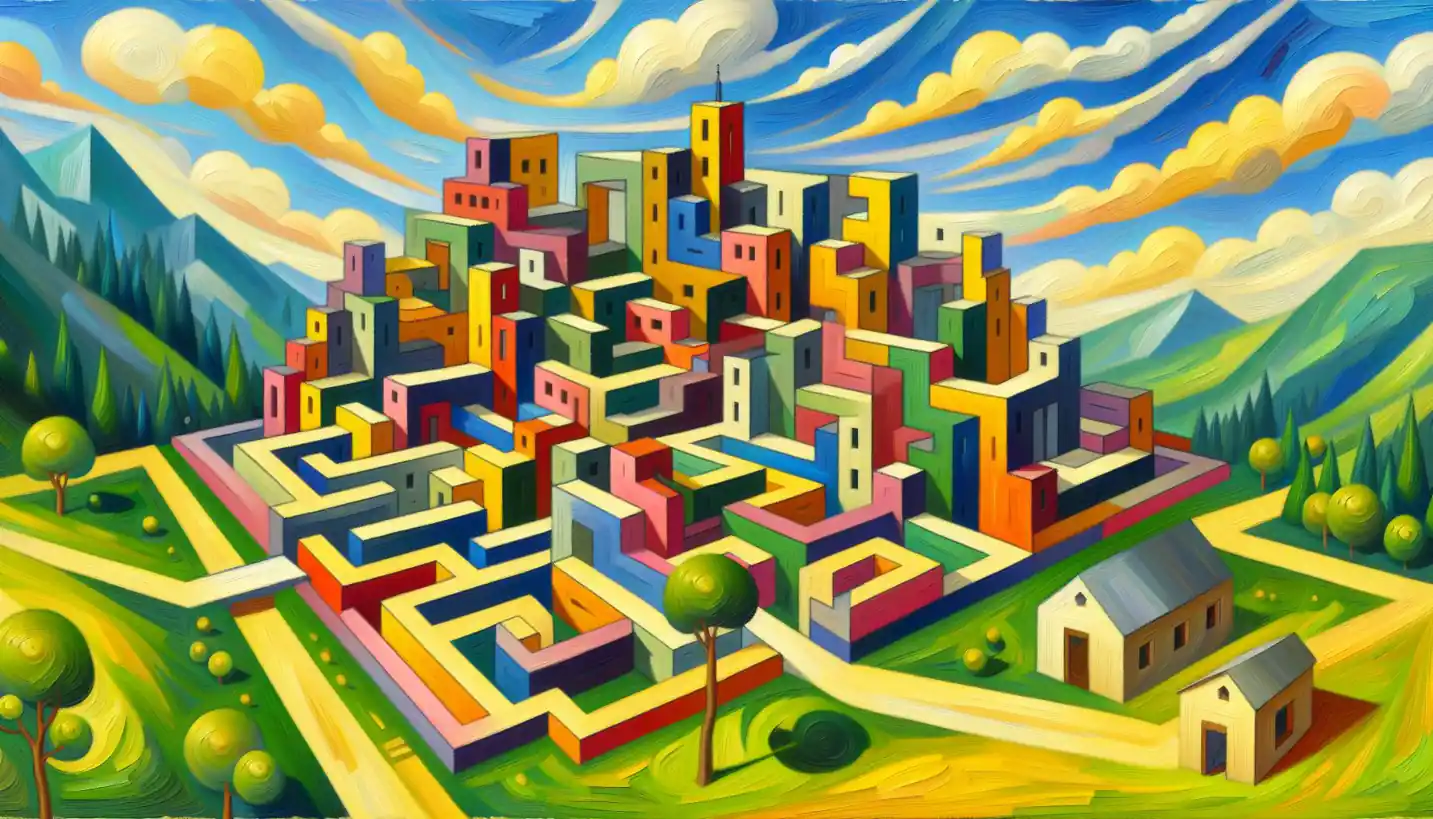· Art · 4 min read
Corbel: The Fascinating Bridge Between Architecture and Art
Discover the unique blend of form and functionality that corbels bring to architecture and art, creating stunning visual and structural effects.

Picture a time when grand cathedrals soared into the sky and castles stood as fortresses against the ages. It’s here that the corbel, a seemingly humble architectural element, takes center stage. Corbels have been used for centuries, blending functionality with beauty, serving both as a workhorse and a decorative element.
What is a Corbel?
A corbel is like a sturdy shelf jutting out from a wall, often used to support something above it, like a balcony, arch, or overhang. Imagine it as an extra pair of hands that help hold things up. Often, you’ll find them crafted from stone, wood, or metal, which allows them to not only bear weight but also to be carved into intricate designs.
The Role of Corbels in Architecture
Corbels have played a critical role in architecture throughout history. In medieval structures, corbels were often essential in distributing the weight of heavy walls and ceilings. By projecting from the wall, they could support beams and arches without needing additional pillars or columns.
Think about the magnificent cathedrals in Europe. Their soaring arches and expansive ceilings were made possible, in part, by corbels. They allowed architects to push the boundaries of design by providing the necessary structural support while freeing up space below for large gatherings and open interiors.
Corbels as Art
But corbels are not just functional; they are also art. The beauty of corbels lies in their versatility. Craftsmen historically carved them into various shapes ranging from simple geometric patterns to elaborate figures of animals and mythical beasts. Each corbel tells a story — it could be a representation of a local legend, a religious symbol, or merely an expression of the carver’s creativity.
Historic Examples of Corbels
Let’s wander into history. In ancient Rome, corbels were adeptly used in aqueducts and bridges. The Romans were masters of utilitarian design, yet even their corbels were often embellished with decorative elements.
Moving into the medieval period, Gothic architects embraced corbels with enthusiasm. One famous example is the ornately carved corbels of Notre-Dame Cathedral, where you can see fantastical creatures peering down from the walls. These served not just as supports but as a means to inspire awe and tell stories of faith.
Corbels Around the World
Corbels aren’t exclusive to Europe. In India, the stone chhajja often relies on richly decorated corbels to support the balconies of palaces and temples. These designs frequently include intricate carvings of flowers and animals, adding a touch of splendor to the architecture.
In China, wooden corbels, known as “dougong,” have been a staple in traditional buildings. These interlocking brackets are not just functional; they add an undeniable aesthetic charm, reflecting the precision and artistry of Chinese craftsmanship.
Modern Applications and Revival
Corbels may have ancient roots, but they’re still relevant today. In contemporary architecture, corbels are making a stylish comeback. Modern designers often use them as decorative embellishments, made from materials like steel and glass, to give buildings a sense of classic elegance.
In homes, corbels can be found under kitchen counters, shelves, and mantels, bringing an element of old-world charm to modern interiors. They allow homeowners to incorporate historical designs into contemporary spaces, seamlessly blending the past with the present.
Why Corbels Matter
Why should we care about corbels today? Beyond their practical uses, corbels represent a bridge between utility and artistry. They show us that functional elements don’t have to be bland—they can inspire, captivate, and tell a story.
Corbels invite us to appreciate the details. In a world often focused on the sleek and minimal, they remind us of a time when buildings were canvases for both structural innovation and artistic expression.
The Future of Corbels
As we look to the future, the enduring allure of corbels suggests they will continue to inspire architects and designers. Advances in technology may bring new materials and methods of production, allowing corbels to evolve while preserving their traditional essence.
Imagine a world where buildings not only meet our functional needs but also enrich our aesthetic experience, much like the cathedrals and palaces of old. Corbels can help lead the way, offering a nod to history while embracing the possibilities of modern design.
Exploring Corbels Around You
Next time you find yourself surrounded by architecture, take a closer look. You might discover a corbel peering at you from the past, holding up a mantle, or simply adding charm to the scenery. Each corbel holds a story worth exploring, inviting us to connect with the timeless dance between architecture and art.
In this way, the corbel continues its journey through history, a small yet mighty keepsake of human creativity and ingenuity.


